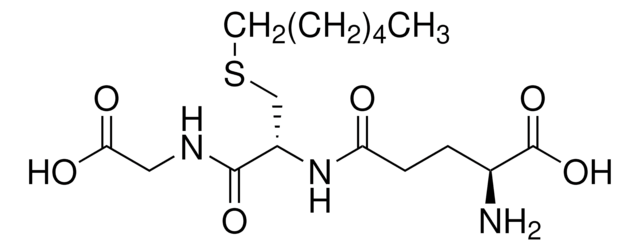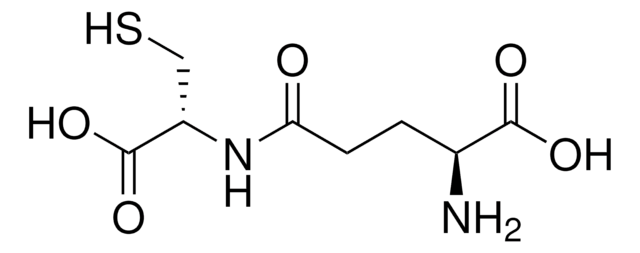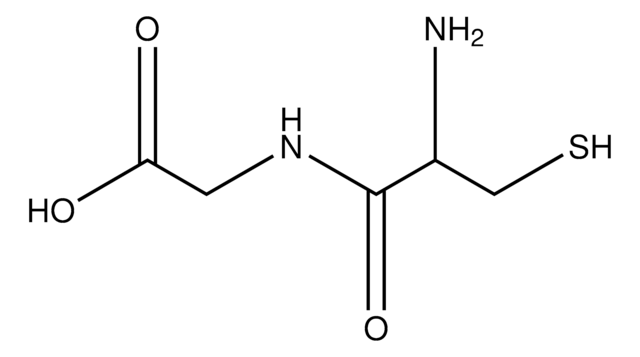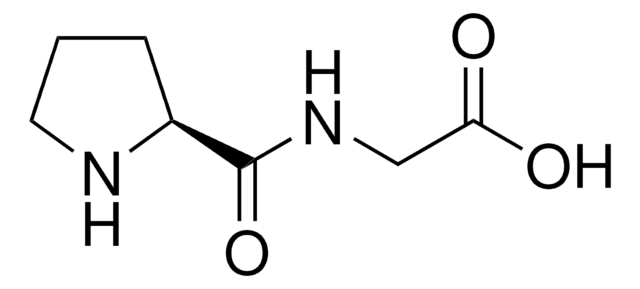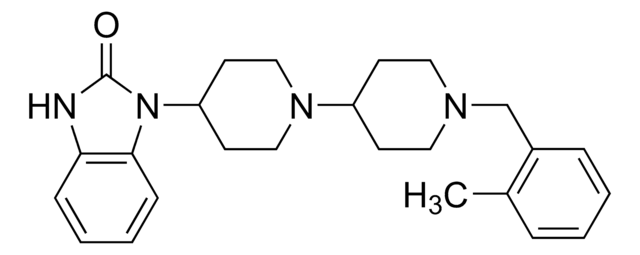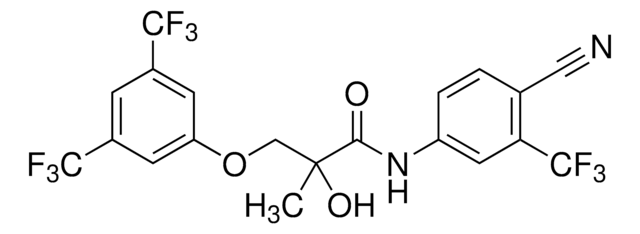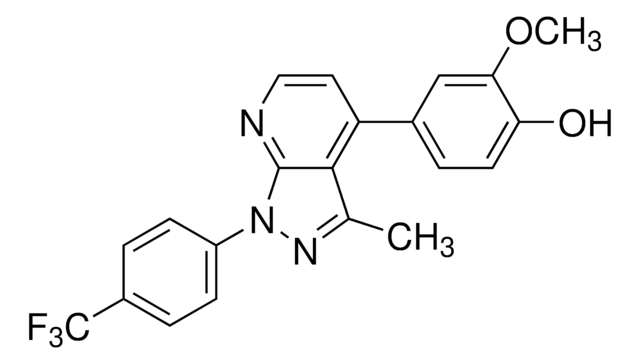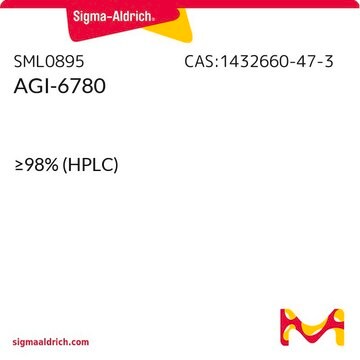M4139
S-Methylglutathione
>98% (TLC), suitable for cell culture
Synonym(s):
L-γ-glutamyl-S-methyl-L-cysteinyl-glycine
About This Item
Recommended Products
Product Name
S-Methylglutathione,
Assay
>98% (TLC)
Quality Level
form
powder
technique(s)
cell culture | mammalian: suitable
color
white
storage temp.
2-8°C
SMILES string
CSCC(NC(=O)CCC(N)C(O)=O)C(=O)NCC(O)=O
InChI
1S/C11H19N3O6S/c1-21-5-7(10(18)13-4-9(16)17)14-8(15)3-2-6(12)11(19)20/h6-7H,2-5,12H2,1H3,(H,13,18)(H,14,15)(H,16,17)(H,19,20)
InChI key
QTQDDTSVRVWHMO-UHFFFAOYSA-N
Related Categories
1 of 4
This Item | SML1145 | SML1964 | SML0895 |
|---|---|---|---|
| form powder | form powder | form powder | form powder |
| storage temp. 2-8°C | storage temp. 2-8°C | storage temp. 2-8°C | storage temp. 2-8°C |
| solubility DMSO: 2 mg/mL, clear | solubility DMSO: 20 mg/mL, clear | solubility DMSO: 10 mg/mL, clear | solubility DMSO: 20 mg/mL, clear |
| color white to beige | color white to beige | color white to beige | color white to light brown |
Biochem/physiol Actions
Substrates
Storage Class Code
11 - Combustible Solids
WGK
WGK 3
Flash Point(F)
Not applicable
Flash Point(C)
Not applicable
Personal Protective Equipment
Choose from one of the most recent versions:
Already Own This Product?
Find documentation for the products that you have recently purchased in the Document Library.
Our team of scientists has experience in all areas of research including Life Science, Material Science, Chemical Synthesis, Chromatography, Analytical and many others.
Contact Technical Service
